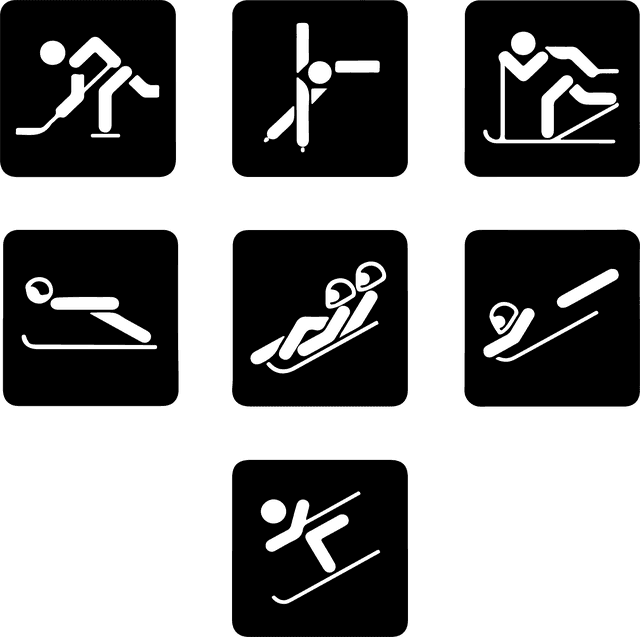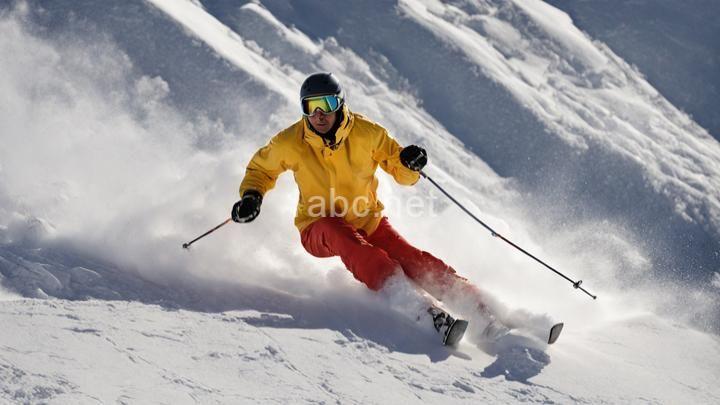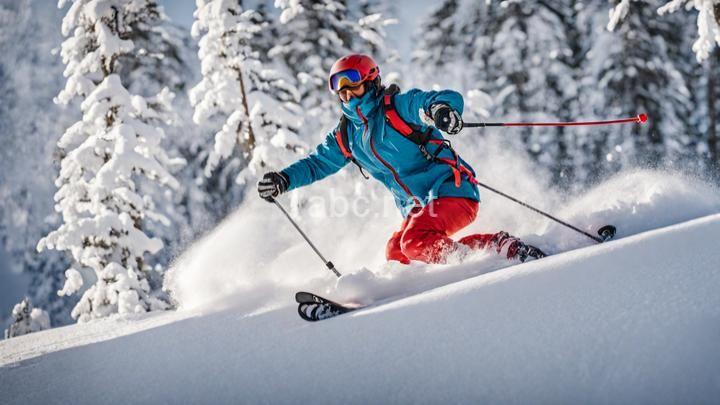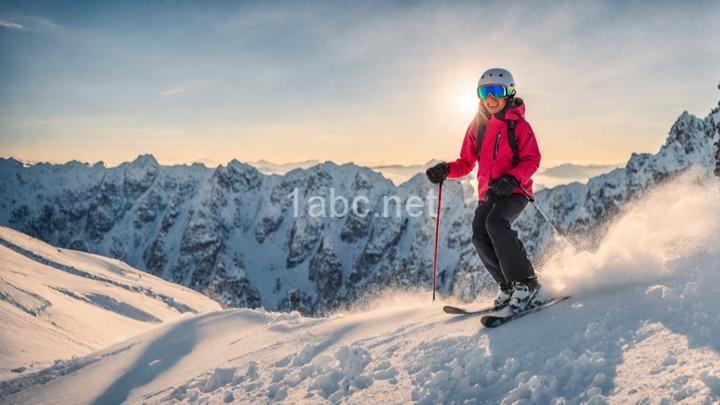Top 10 Must-Have Skiing Equipment for an Epic Adventure
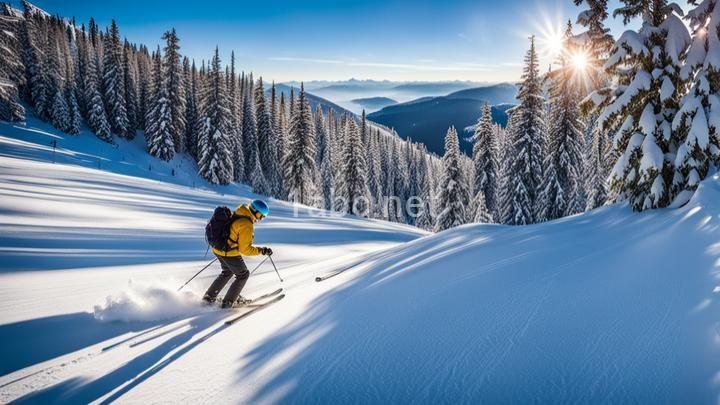
Introduction:
Hey there, fellow skiing enthusiasts! Are you ready to hit the slopes and embark on an epic adventure? Well, before you strap on your boots and glide down those powdery mountains, let's talk about the essential skiing equipment that will make your experience unforgettable. Choosing the right gear is crucial for safety, comfort, and performance, so let's dive into the top 10 must-have skiing equipment!
I. Skis and Bindings:
When it comes to skiing, the right skis and bindings can make all the difference. The type of skis you choose depends on your skiing style and the terrain you'll be conquering. Whether you're into carving, freestyle, or backcountry skiing, there's a pair of skis out there for you. Don't forget to match your skis with the appropriate bindings for a secure connection between your boots and skis. Popular choices include Marker, Salomon, and Look bindings.
II. Ski Boots:
Comfort is key when it comes to ski boots. Ill-fitting boots can quickly turn your skiing adventure into a painful experience. Look for boots that offer a snug fit without causing discomfort. Consider features like flex, last width, and customization options to find the perfect match for your feet. Brands like Tecnica, Lange, and Atomic are known for their quality and performance.
III. Ski Poles:
Ski poles are more than just extra accessories; they play a vital role in maintaining balance, propulsion, and maneuverability on the slopes. The length of your ski poles should be determined by your height. For a proper fit, the top of the pole should reach your forearm when your elbow is bent at a 90-degree angle. Look for durable materials like aluminum or carbon fiber, and consider adjustable options for versatility.
IV. Helmet:
Safety should always be a top priority when skiing. Wearing a helmet is a no-brainer when it comes to protecting your head from potential injuries. Look for helmets with advanced safety features like MIPS (Multi-directional Impact Protection System), ventilation to prevent overheating, and a comfortable fit. Brands like Smith, Giro, and POC offer helmets that combine safety and style.
V. Goggles:
Goggles are a must-have accessory to shield your eyes from wind, snow, UV rays, and glare. Look for goggles with anti-fog coating to maintain clear vision, interchangeable lenses for various lighting conditions, and options that fit over glasses if needed. Oakley, Smith, and Anon are popular brands known for their quality optics.
VI. Base Layers:
Keeping warm and dry is essential while skiing, and base layers play a crucial role in achieving that. Base layers provide insulation, moisture-wicking properties, and comfort. Choose materials like merino wool or synthetic fabrics that are suitable for different weather conditions. Layering techniques, such as wearing a moisture-wicking base layer followed by an insulating mid-layer, will keep you cozy on the slopes.
VII. Ski Jacket:
A good ski jacket is your first line of defense against cold temperatures, wind, snow, and moisture. Look for jackets with waterproofing and breathability features to keep you dry and comfortable. Insulation levels and additional pockets for storage are also important factors to consider. Brands like The North Face, Columbia, and Arc'teryx are known for their durable and functional ski jackets.
VIII. Ski Pants:
Ski pants are essential for keeping your lower body dry, warm, and comfortable. Look for pants with waterproofing and breathability features to repel moisture while allowing sweat to escape. Adjustable waistbands are handy for achieving the perfect fit, and insulation levels can be chosen based on personal preference. Find the right style and fit from brands like Patagonia, Burton, and Helly Hansen.
IX. Gloves or Mittens:
Protecting your hands from freezing temperatures and moisture is crucial for an enjoyable skiing experience. Whether you prefer gloves or mittens is a matter of personal preference. Look for options with insulation, waterproofing, dexterity, and touchscreen compatibility if you want to capture those epic moments on your smartphone. Brands like Hestra, Black Diamond, and Dakine offer a wide range of hand protection options.
X. Accessories:
To enhance your skiing experience, consider investing in additional accessories that provide extra comfort and convenience. Neck gaiters and balaclavas protect your face from the biting cold, while hand warmers keep your digits toasty. Boot dryers are a game-changer, ensuring that your boots are warm and dry for the next day of skiing. Explore options from brands like Buff, Seirus, and DryGuy to elevate your skiing adventure.
Conclusion:
Congratulations, you're now equipped with the knowledge of the top 10 must-have skiing equipment! Remember, investing in quality gear is essential for maximizing safety and enjoyment on the slopes. So, gear up, stay warm, and get ready for an epic skiing adventure that will leave you with unforgettable memories.
Closing:
Thank you for taking the time to read this blog post. If you have any questions or comments, please feel free to leave them below. Wishing you all the best on your upcoming skiing adventures!
Warm regards,
[Your Name]
FREQUENTLY ASKED QUESTIONS
What are the essential skiing equipment items that I should invest in?
When it comes to skiing, there are a few essential equipment items that you should definitely invest in. These items will not only enhance your skiing experience but also ensure your safety on the slopes. Here are the must-have skiing equipment items:
-
Skis: A good pair of skis is crucial for any skier. Make sure to choose skis that are suitable for your skill level and skiing style. Consider factors like length, width, and stiffness when selecting the right skis for you.
-
Ski Boots: Properly fitting ski boots are essential for control and comfort while skiing. Invest in boots that provide good support and a snug fit. Don't forget to try them on and get them properly fitted at a ski shop.
-
Ski Poles: Ski poles help with balance and maneuverability on the slopes. Look for poles that are the right length for your height and have comfortable grips.
-
Ski Bindings: Bindings are what connect your boots to your skis. It's important to have bindings that are adjusted correctly to ensure safety. Consult a professional to get your bindings properly set up.
-
Ski Helmet: Safety should always be a priority when skiing. A well-fitting ski helmet can protect your head in case of a fall or collision. Look for helmets that meet safety standards and provide proper ventilation.
-
Ski Goggles: Protect your eyes from sun, wind, and snow glare with a good pair of ski goggles. Choose goggles with UV protection, anti-fog features, and a comfortable fit.
-
Ski Jacket and Pants: Stay warm and dry on the slopes with a quality ski jacket and pants. Look for waterproof and breathable materials that provide insulation while allowing freedom of movement.
-
Base Layers: Layering is key to staying comfortable while skiing. Invest in moisture-wicking base layers that will keep you warm and dry throughout the day.
-
Ski Socks: Good ski socks can make a big difference in your comfort and performance. Look for socks specifically designed for skiing, with cushioning and moisture-wicking properties.
-
Ski Gloves or Mittens: Protect your hands from the cold with insulated ski gloves or mittens. Look for gloves that are waterproof, breathable, and provide good dexterity.
Remember, investing in quality skiing equipment can enhance your skiing experience and keep you safe on the slopes. It's always a good idea to consult with professionals at a ski shop to ensure you're getting the right equipment for your needs. Stay safe and enjoy your time on the slopes!
How do I choose the right size of skis?
Choosing the right size of skis can greatly enhance your skiing experience. Here are some tips to help you make the right decision:
-
Consider your skiing ability: If you're a beginner, it's generally recommended to go for shorter skis, as they are more maneuverable and easier to control. Intermediate and advanced skiers may prefer longer skis for increased stability and speed.
-
Take your weight into account: Your weight plays a significant role in determining the appropriate ski length. Heavier individuals tend to require longer skis for better stability, while lighter individuals may benefit from shorter skis for easier control.
-
Determine your skiing style: Different skiing styles may require different ski lengths. If you enjoy carving turns on groomed runs, shorter skis are usually preferred. On the other hand, if you enjoy off-piste skiing or deep powder, longer skis can provide better floatation and stability.
-
Consider the ski's intended use: Skis designed for specific disciplines, such as freestyle, all-mountain, or powder skiing, may have different size recommendations. Be sure to check the manufacturer's guidelines or consult with a knowledgeable salesperson to find the right size for your intended use.
-
Test before purchasing: If possible, try out different ski lengths before making a final decision. Rental shops or demo centers often offer the opportunity to test skis, allowing you to get a feel for different sizes and determine which one suits you best.
Remember, these tips are general guidelines, and individual preferences may vary. Ultimately, the right size of skis depends on your personal comfort, skiing style, and ability level. Taking these factors into consideration will help you choose skis that are tailored to your needs and optimize your enjoyment on the slopes. Happy skiing!
What type of ski boots should I look for?
When looking for ski boots, there are a few factors to consider that can help you find the right type for your needs. First and foremost, it's important to find boots that fit you well and provide the necessary support and comfort. This will ensure that you can ski with confidence and minimize the risk of injury.In terms of the type of ski boots, there are generally three main categories: downhill ski boots, cross-country ski boots, and backcountry ski boots.
Downhill ski boots are designed for alpine skiing and are the most common type of ski boots. They provide a stiff and supportive structure to maximize power transfer and control on groomed slopes. These boots typically feature a high cuff for better stability and are compatible with bindings used in downhill skiing.
Cross-country ski boots, on the other hand, are specifically designed for Nordic skiing. They are lighter and more flexible compared to downhill boots, allowing for a greater range of motion. These boots are usually compatible with the Nordic ski bindings used in cross-country skiing.
Backcountry ski boots are designed for off-piste skiing and are suitable for those who enjoy exploring ungroomed terrain. These boots are typically more flexible and have a walk mode, which allows for easier hiking or climbing. They are often compatible with tech bindings used in backcountry skiing.
Ultimately, the type of ski boots you should look for depends on the type of skiing you plan to do. If you're new to skiing or mainly ski on groomed slopes, downhill ski boots would be a good choice. If you prefer Nordic skiing or enjoy exploring off-piste terrain, cross-country or backcountry ski boots would be more suitable.
Remember to try on different boots and consult with a knowledgeable salesperson or ski instructor to ensure you find the right fit and type of ski boots for your specific needs. Happy skiing!
Do I need to wear specific clothing for skiing?
When it comes to skiing, wearing specific clothing is highly recommended for a comfortable and enjoyable experience on the slopes. While there isn't a strict dress code, certain clothing items are essential for your safety and protection against the cold weather conditions.First and foremost, it's important to invest in a good quality ski jacket and pants that are both waterproof and breathable. These will keep you dry and prevent any moisture from seeping in, ensuring you stay warm and comfortable throughout your skiing adventure.
Layering is also key to staying warm on the slopes. Start with a moisture-wicking base layer, such as thermal underwear, to keep sweat away from your body. Over this, add an insulating mid-layer, like a fleece or down jacket, to provide extra warmth. Finally, top it off with your waterproof ski jacket.
As for your lower body, wearing thermal or moisture-wicking leggings or long johns under your ski pants is a great idea. This will help regulate your body temperature and keep you cozy.
Don't forget about your extremities! Invest in a good pair of ski socks that are designed to keep your feet warm and dry. Additionally, wearing waterproof and insulated gloves or mittens will protect your hands from the cold and ensure you can grip your ski poles comfortably.
Lastly, don't neglect your head and eyes. Wearing a ski helmet is highly recommended for safety reasons, as it protects your head in case of a fall or collision. Goggles or sunglasses are also essential to shield your eyes from the sun, wind, and snow glare.
Overall, while specific clothing is not mandatory, it is highly recommended to ensure your comfort, safety, and enjoyment while skiing. So, make sure to dress appropriately and have a fantastic time on the slopes!
